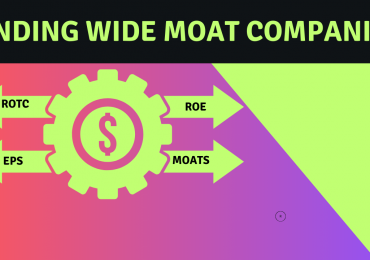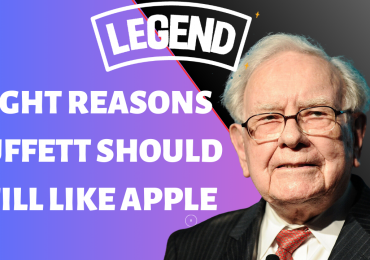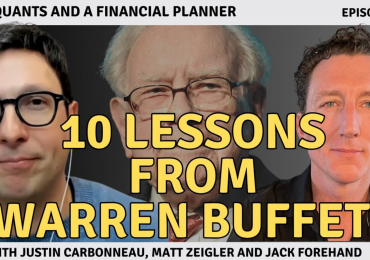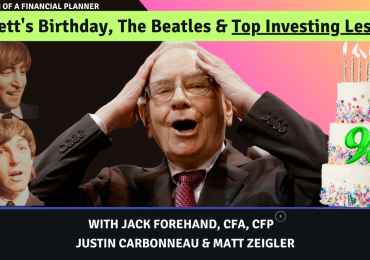Every other issue of The Validea Hot List newsletter examines in detail one of John Reese’s computerized Guru Strategies. This latest issue looks at the Warren Buffett-inspired strategy and portfolio, which has almost doubled the S&P 500’s returns since its inception. Below is an excerpt from today’s newsletter, along with several top-scoring stock ideas based on the Buffett investment strategy.
Taken from the December 10, 2010 issue of The Validea Hot List
Guru Spotlight: Warren Buffett
With his humble Midwest beginnings, plainspoken wisdom and wit, and incredible wealth, Warren Buffett has become the most-watched investor in the world. But as interesting a character as Buffett is, the more important piece of the Buffett puzzle for investors is this: How did he do it?
My Buffett-based Guru Strategy attempts to answer that question. Based on the approach Buffett reportedly used to build his fortune, it tries to use the same conservative, stringent criteria to choose stocks that the “Oracle of Omaha” has used in evaluating businesses.
While Buffett has not publicly disclosed his exact strategy (though he has hinted at pieces of it), his former daughter-in-law, Mary Buffett, who worked closely with him, wrote extensively about his approach in her book Buffettology, which forms the basis for my Buffett-based model.
Part of Buffett’s approach is non-quantitative. For example, he likes to invest in companies that have very recognizable brand names, to the point that it is difficult for competitors to take away their market share, no matter how much capital they have. He also likes firms whose products are simple for an investor to understand — food, diapers, razors, to name a few examples.
In the end, however, for Buffett, it comes down to the numbers — those on a company’s balance sheet and those that represent the price of its stock.
In terms of the numbers on the balance sheet, one theme of the Buffett approach is solid results over a long period of time. He likes companies that have a lengthy history of steady earnings growth, and, in most cases, the model I base on his philosophy requires companies to have posted increasing earnings per share each year for the past ten years. There are a few exceptions to this, one of which is that a company’s EPS can be negative or be a sharp loss in the most recent year, because that could signal a good buying opportunity (if the rest of the company’s long-term earnings history is solid).
Another part of Buffett’s conservative approach: targeting companies with manageable debt. My model calls for companies to have the ability to pay off their debt within five years, based on their current earnings. It really likes stocks that could pay off their debts in less than two years.
Smart Management, and an Advantage
Two qualities Buffett is known to look for in his buys are strong management and a “durable competitive advantage”. Both of those are qualitative things, but Buffett has used certain quantitative measures to get an idea of whether a firm has those qualities. Two of those measures are return on equity and return on total capital. The model I base on Buffett’s approach likes firms to have posted an average ROE of at least 15% over the past 10 years and the past three years, and an ROTC of at least 12% over those time frames.
 Another way Buffett examines a firm’s management is by looking at how the it spends the company’s retained earnings — that is, the earnings a company keeps rather than paying out in dividends. My Buffett-based model takes the amount a company’s earnings per share have increased in the past decade and divides it by the total amount of retained earnings over that time. The result shows how much profit the company has generated using the money it has reinvested in itself — in other words, how well management is using retained earnings to increase shareholders’ wealth. The Buffett method requires a firm to have generated a return of 12% or more on its retained earnings over the past decade.
Another way Buffett examines a firm’s management is by looking at how the it spends the company’s retained earnings — that is, the earnings a company keeps rather than paying out in dividends. My Buffett-based model takes the amount a company’s earnings per share have increased in the past decade and divides it by the total amount of retained earnings over that time. The result shows how much profit the company has generated using the money it has reinvested in itself — in other words, how well management is using retained earnings to increase shareholders’ wealth. The Buffett method requires a firm to have generated a return of 12% or more on its retained earnings over the past decade.
The Price Is Right?
The criteria we’ve covered so far all are used to identify “Buffett-type” stocks. But there’s a second critical part to Buffett’s analysis: price — can he get the stock of a quality company at a good price?
One way my Buffett-based model answers this question is by comparing a company’s initial expected yield to the long-term treasury yield. (If it’s not going to earn you more than a nice, safe T-Bill, why take the risk involved in a stock?)
To predict where a stock will be in the future, Buffett uses not just one, but two different methods to estimate what the company’s earnings and stock’s rate of return will be 10 years from now. One method involves using the firm’s historical return on equity figures, while another uses earnings per share data. (You can find details on these methods by viewing an individual stock’s scores on the Buffett model on Validea.com, or in my latest book, The Guru Investor.)
This notion of predicting what a company’s earnings will be in 10 years may seem to run counter to Buffett’s nonspeculative ways. But while using these methods to predict a company’s earnings for the next 10 years in her book, Mary Buffett notes: “In most situations this would be an act of insanity. However, as Warren has found, if the company is one of sufficient earning power and earns high rates of return on shareholders’ equity, created by some kind of consumer monopoly, chances are good that accurate long-term projections of earnings can be made.”
A Strong Rebounder
Like Buffett himself, my Buffett-based portfolio has excelled coming out of downturns. In 2004, as we were emerging from the lengthy recession associated with the tech stock bust, the Buffett portfolio surged 37.3%, more than quadrupling the S&P’s 9% gain. In addition, after struggling in 2007 and 2008 amid the latest recession and bear market, the portfolio bounced back strong in 2009 — very strong. It gained 50.3%, more than doubling the gains of the broader market.
This strong performance out of downturns is no surprise, given Buffett’s penchant for pouncing on good, beaten down stocks, which usually abound during tough times as investors let fear get the best of them. (One of Buffett’s mantras is that investors “should try to be fearful when others are greedy and greedy only when others are fearful.”)
In the end, Buffett-type stocks are not the kind of sexy, flavor-of-the-month picks that catch most investors’ eyes; instead, they are proven businesses selling at good prices. That approach, combined with a long-term perspective, tremendous discipline, and an ability to keep emotions at bay (allowing him to buy when others are fearful), is how Buffett has become the world’s greatest investor. Whatever the size of your portfolio, those qualities are worth emulating.
Now, here’s a look at my Buffett portfolio’s current holdings:
Aeropostale, Inc. (ARO)
Ross Stores, Inc. (ROST)
The TJX Companies, Inc. (TJX)
China Mobile Ltd. (CHL)
World Acceptance Corp. (WRLD)
Garmin Ltd. (GRMN)
Coach, Inc. (COH)
FactSet Research Systems Inc. (FDS)
Wipro Limited (WIT)
Infosys Technologies Limited (INFY)








